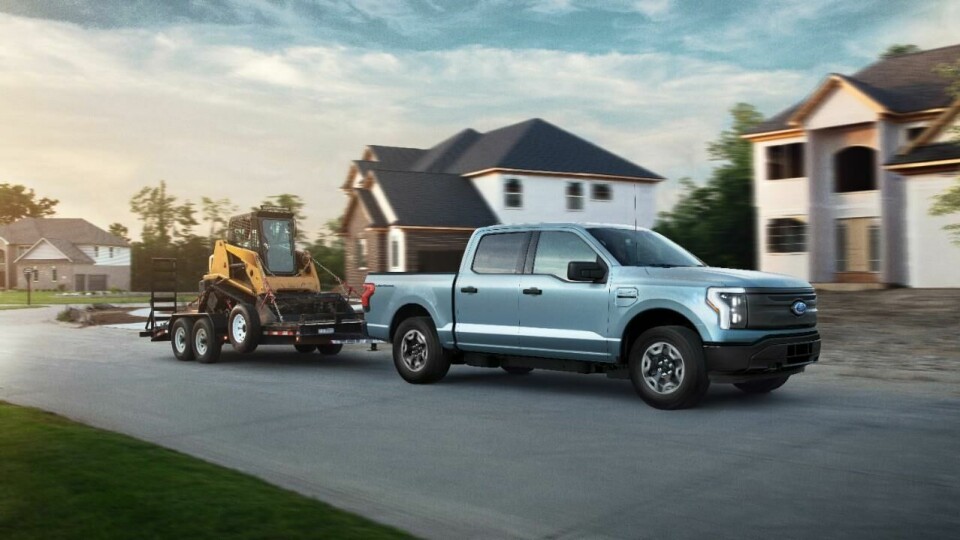
First Sight: Ford F-150 Lightning Pro
The commercial grade of the full-sized pickup is one piece of Ford’s ambitious new plan for business owners
Ford’s best-selling F-150 pickup truck is going electric, with the first deliveries expected to begin this spring. The blue oval’s stalwart workhorse in its BEV incarnation will deliver up to 300 miles of range and offered in four trim levels — perhaps the most important of which is the Pro model, aimed at the commercial segment, which accounts for a significant portion of Ford’s F-150 sales. We don’t write much about commercial vehicles here at CDN, and while it may not seem glamourous, fleet and business sales are often the bread-and-butter for most manufacturers, so it’s crucial to get the design right.
“Commercial customers have very different needs, but most manufacturers sell watered-down versions of retail vehicles,” Ford President Jim Farley told us recently at a presentation in Sonoma County, in California’s wine country. Instead, he says, the F-150 Pro was designed from the ground-up with toughness and ability in mind.
Ford chief designer for trucks Ehab Kaoud spoke with CDN about designing for the commercial buyer. Kaoud says one of the key strategies for making an authentic work truck was to create the Pro series from the inception of the design, instead of stripping down a more luxurious model after the fact. “We wanted to have everything clear from the beginning and have a holistic view,” he explains. “We knew there would be a premium series, a mid series, and a pro series. That allowed me to know what I needed to do so I didn’t skimp out and take away from the Pro buyer. The idea is not that one vehicle that is cheaper, the idea is that it fits the customer’s values and provides an above and beyond experience.”
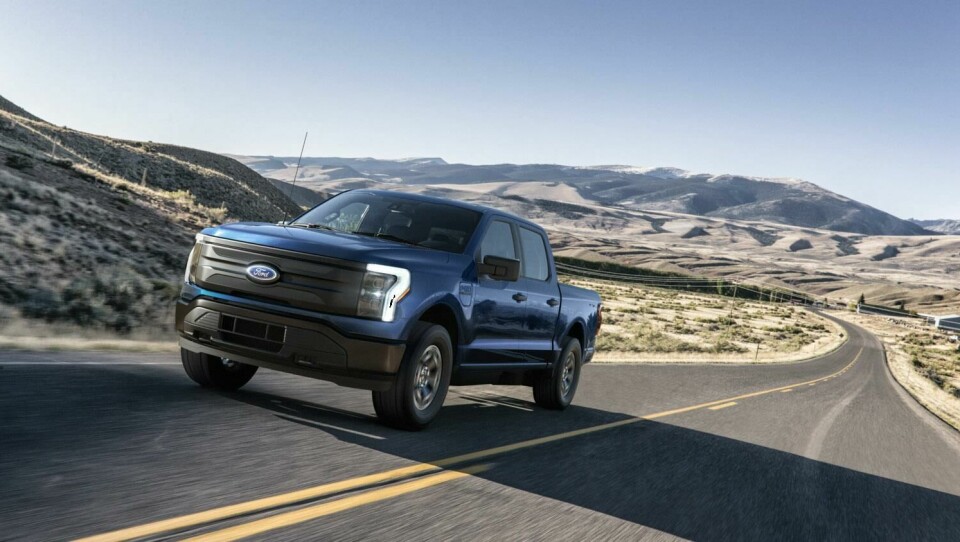
The exterior of the F-150 Pro is much more utilitarian than its consumer-oriented counterparts. While other trims feature a prominent lighting signature that runs horizontally across the top of the front grille, this “light bar” is conspicuously absent on the Pro. “What’s important is no nonsense. Everything is done for versatility and to serve more of the purpose of that user,” Kaoud says. “We’re looking at it also as a business owner who has four or five of these vehicles, going from point A to point B, to deliver what needs to be delivered, rather than the extra bits and pieces.
What was more important is what’s inside when you open that hood, which is that it’s 100 percent electric.” Other differences include rugged bumpers finished in black to minimise dirt and maximise durability, as well as a unique grille design. “The grille is related to the higher series grille, but we opted to spend the money and the use of the design to focus on the textures, understanding that this thing is going to be beat up. We spent a lot of time finding the proper patten that elevates our idea of ‘built Ford tough,’ as well as giving the customer the satisfactory experience fitting his (or her) use,” Kaoud says.
“User experience and UI and all of these things are very important now more than ever — and they’re going to get more important. So we are really putting a lot of resources in that direction”
Inside, the F-150 Pro has some clever functional design elements such as an optional fold-out work surface in the centre console, and front seats that recline completely flat. “Those ideas come from spending time with the end user to see what they do with their truck and what’s needed,” Kaoud explains. “Some people have to eat their lunch in their truck. People take naps in their truck. People do a lot of quick meetings in their truck. So all of a sudden, the truck becomes your office space, your dining room, your work room, and your meeting room.”
Kaoud adds that storage areas were also treated differently for commercial buyers. “There are issues like safety and security. They want things to be hidden; they want covered storage. But in other cases, for example, we opted to leave the centre console open to use at whim.”
Colour and trim choices are dark and durable. “If you look at the Platinum series, it comes in a very light colour, but naturally we wouldn’t have it for the Pro,” Kaoud points out. “The Ford Pro interior materials harmonize together in Medium Dark Gray and Black Onyx. These include decorative finish panels and accent stitching combined with highly durable, easy-to-clean seats and flooring.”
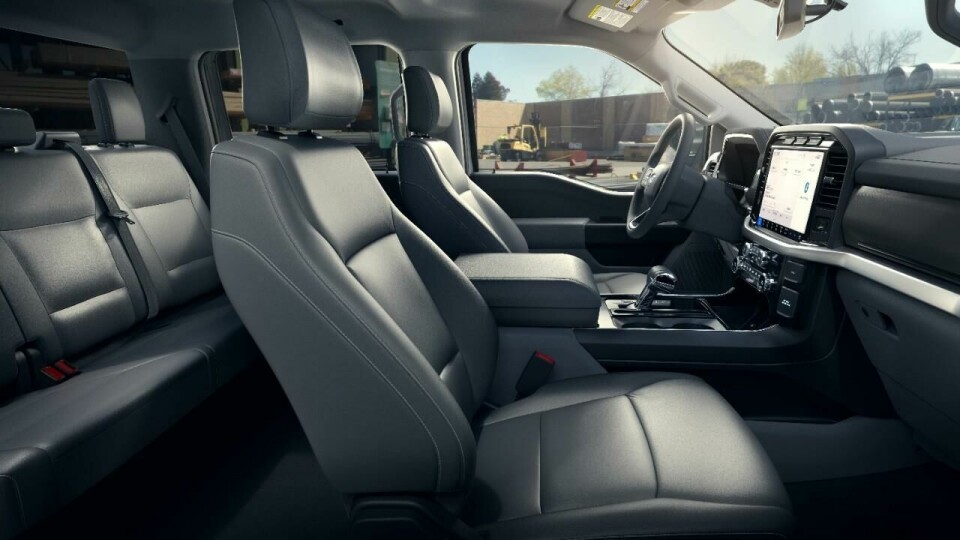
Meanwhile, the electrification of the country’s best-selling truck is only one element of a much larger plan for Ford to expand its offerings for business customers. A new, separate division called Ford Pro aims to offer integrated hardware, software, and telematics solutions to support commercial endeavors, from small family businesses to giant corporations. (Ford is one of a handful of companies that have inked deals to provide EVs to Amazon.) In addition to its portfolio of trucks and a new electric Transit van, Ford has launched a digital platform that allows business owners to track vehicles, plan routes, precondition vehicles ahead of time to preserve range, and analyse data such as driving behaviours.
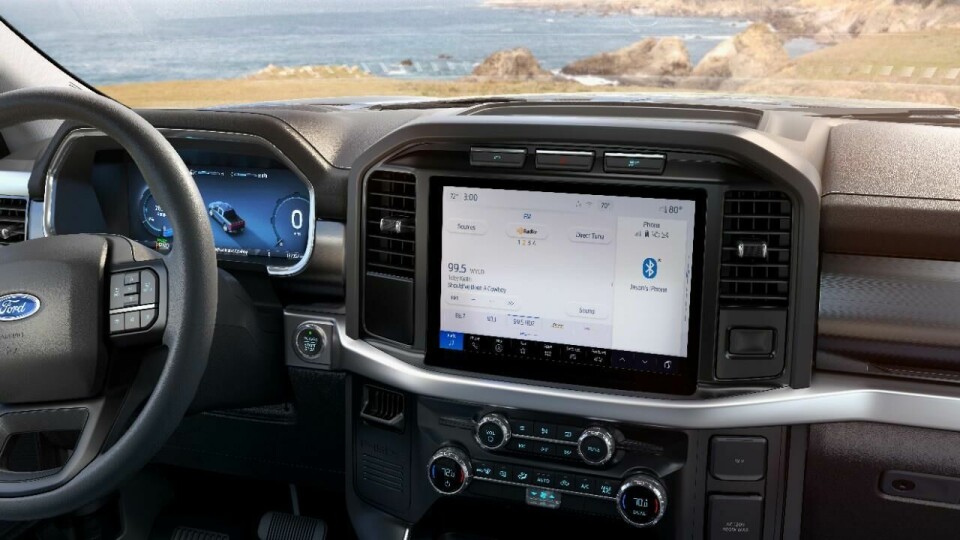
“User experience and UI and all of these things are very important now more than ever — and they’re going to get more important. So we are really putting a lot of resources in that direction,” Kaoud explains. “Five years ago, if I called a plumber or carpenter, they would come in with sheets of paper. Today, they come in with an iPad or some sort of tablet, and the invoice and they payment is through that. So the acceptance of technology and how that can be connected in a better way, or more seamlessly into your vehicle, that becomes very important.”
As with all good industrial design, the secret to creating a successful commercial vehicle lies in making life easier for the user. “We want to alleviate pain points,” Kaoud says. “There are issues with congestion and having to go from one place to the next. People still have the same needs, we will have the same issues with picking up heavy stuff and putting it in or taking it out, issues with security, issues that are all around us from a social standpoint, as well as the pandemic. Those things are not going to change, so we must ask how we alleviate these challenges and make the transition from home, to work, to truck — and for any other product — to be seamless and easier to learn.”
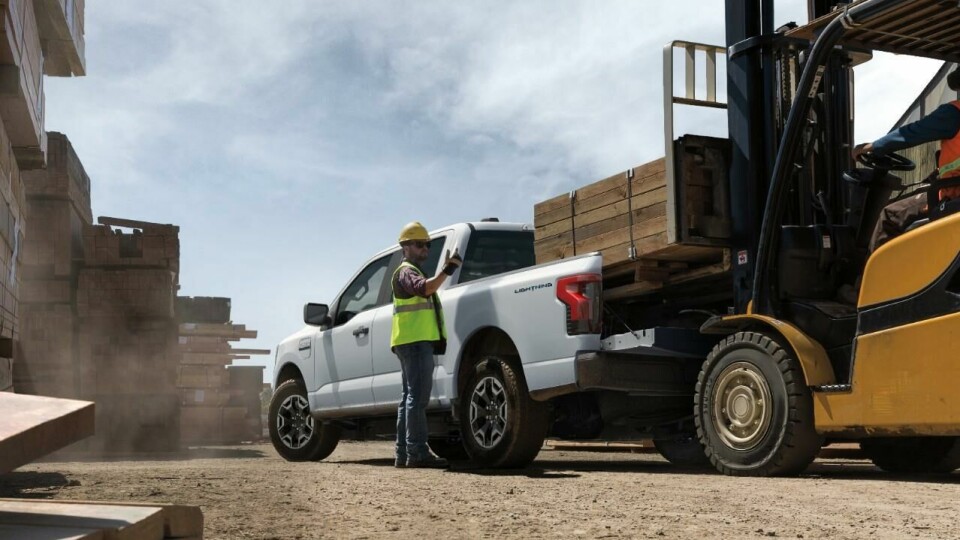
So far, Ford Pro has a few heavy hitters on board. At the press event in California, we met with legendary film director Francis Ford Coppola at his vineyard estate, who says he will be using Ford’s transit vans and other EVs to transport materials, equipment — and yes, wine — in his extensive new underground fermentation facility. Ford also announced a pilot program with Sonoma County Wine Growers, an association of vintners, some of whom will be using Ford’s vehicles and digital solutions and providing feedback along the way. As mobility becomes increasingly more about technology and services, it makes sense for Ford to expand beyond simply building vehicles and providing holistic solutions, especially to its lucrative commercial division. For his part, Farley is optimistic: “Ford Pro is entirely dedicated to commercial customers, and we think it will revolutionize the way customers work.”
For more on the Ford F-150 Lightning, tune into Car Design Dialogues: Electrifying an Icon



